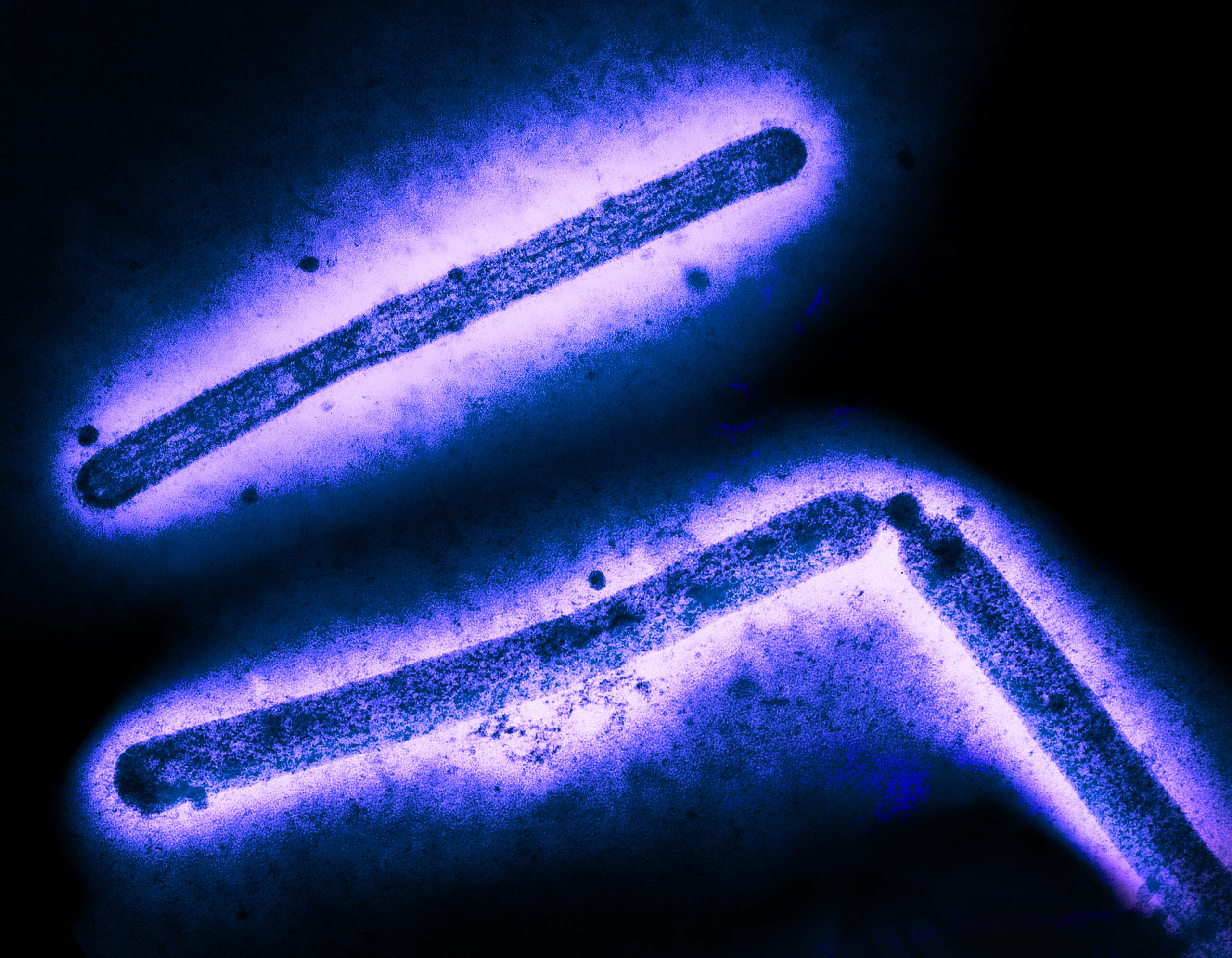Image courtesy of NIAID and CDC; CC-BY 2.0 DEED
The recent rise in highly pathogenic avian influenza (HPAI) H5 cases among humans, poultry, and dairy cattle has caught the public by storm. As of July 26, there have been 13 confirmed human cases of HPAI A(H5) in the U.S. reported since April 2024.1 All cases were among poultry (9) and dairy cattle (4) farm workers who were working with animals infected with HPAI A(H5N1).1 All cases have recovered and there are no reports of human-to-human transmission of HPAI A(5).1 As of July 26, the United States Department of Agriculture (USDA) has confirmed 172 livestock farms and 40 commercial poultry farms have tested positive for HPAI since March 2024.2,3
Human infections with HPAI A(H5N1) are rare, and most commonly occur in those who have unprotected exposure to sick or infected animals.1 This puts poultry and livestock workers at an increased risk of infection. Signs and symptoms of H5N1 in humans include fever or chills; cough; sore throat; difficulty breathing; conjunctivitis; headaches; runny or stuffy nose; muscle or body aches; and diarrhea/vomiting.4 Most of the recent cases have been offered antivirals such as oseltamivir for treatment.1 While there has been an uptick in confirmed human cases of HPAI A(H5N1), the CDC’s current assessment is that the risk to the general public from H5N1 remains low.1
In an effort to compile and disseminate real-time updates on the HPAI A(H5) outbreak in the U.S., Global.health has partnered with Think Global Health to publish a weekly timeline. The curation team sorts through various media sources each day to build a timeline that highlights important H5 updates within the U.S. The team uses a multimodal approach to build the timeline, curating data on human health, animal health, wastewater, and genomics metadata among other information, such as local response initiatives. The updated timeline is released to the general public every Friday.
The CDC will continue to assess information as it becomes available and provide updated response notices, risk assessments, and situational updates here. Additional information and recommendations on the prevention and monitoring of H5N1 in humans can be found on this CDC website. The USDA continues to release reports and updated counts of commercial poultry and livestock farms that test positive for HPAI A(H5). For the latest updates on HPAI A(H5) in the U.S., make sure to check out the Think Global Health timeline every Friday.
Sources
- Centers for Disease Control and Prevention [CDC]. (2024, July 25). CDC confirms three human cases of H5 bird flu among Colorado poultry workers. CDC Newsroom. https://www.cdc.gov/media/releases/2024/s0725-three-human-cases-of-h5-bird-flu.html
- United States Department of Agriculture [USDA]. (2024). HPAI confirmed cases in livestock. USDA Animal and Plant Health Inspection Service. https://www.aphis.usda.gov/livestock-poultry-disease/avian/avian-influenza/hpai-detections/hpai-confirmed-cases-livestock
- United States Department of Agriculture [USDA]. (2024). Confirmations of highly pathogenic avian influenza in commercial and backyard flocks. USDA Animal and Plant Health Inspection Service. https://www.aphis.usda.gov/livestock-poultry-disease/avian/avian-influenza/hpai-detections/commercial-backyard-flocks
- Centers for Disease Control and Prevention [CDC]. (2024, June 6). Symptom monitoring among persons exposed to HPAI. CDC Avian Influenza (Bird Flu). https://www.cdc.gov/bird-flu/hcp/guidance-exposed-persons/symptom-monitoring-hpai.html


